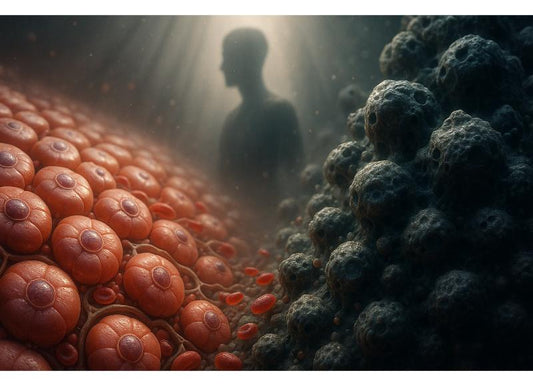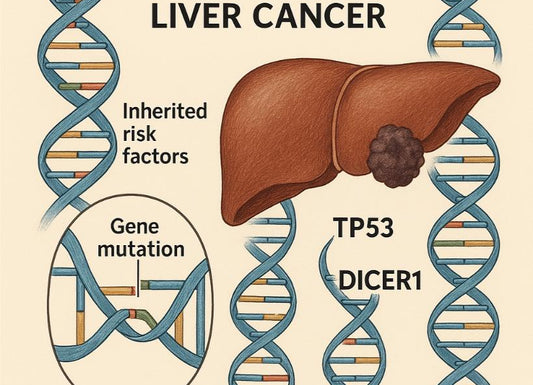Bacterial UTI: What It Is, Symptoms, Causes, Risk Factors, Diagnosis, and Treatment
 Written By
Jaclyn P. Leyson-Azuela, RMT, MD, MPH
Written By
Jaclyn P. Leyson-Azuela, RMT, MD, MPH

Bacterial UTI (urinary tract infection) is one of the most common infections worldwide, which cause uncomfortable symptoms that can significantly impact daily life. These infections occur when harmful bacteria enter the urinary system and multiply, leading to inflammation and pain.
This article will help you understand the signs, causes, and treatment options to help you get the relief you need quickly. Most bacterial UTIs respond well to appropriate treatment when caught early.
Key Insights:
-
E. coli bacteria cause about 75-95% of uncomplicated UTIs, making it the most common culprit behind urinary tract infections
-
Women are 30 times more likely to develop UTIs than men due to anatomical differences and hormonal factors
-
Untreated UTIs can become life-threatening within days if bacteria spread to the kidneys or bloodstream
-
Sexual activity increases UTI risk in women, with symptoms often appearing within 24 hours in 80% of women
-
Holding urine for extended periods creates an ideal breeding ground for bacteria and doubles infection risk
-
At-home urine test strips can detect UTIs with relatively high accuracy, providing quick results before seeing a doctor
What Is Bacterial UTI (Urinary Tract Infection)?
A bacterial UTI happens when harmful bacteria enter your urinary system and begin multiplying in places where they don’t belong. Your urinary tract includes the following structures:
-
Kidneys
-
Ureters
-
Bladder
-
Urethra
All of these structures play important roles in filtering waste and removing it from your body.
When bacteria travel up through the urethra, they settle in the bladder and cause cystitis. If left alone, the same bacteria may continue traveling upward to infect the kidneys. This creates a more serious infection called pyelonephritis.
The natural defense mechanisms of the body usually flush out small amounts of bacteria through urination. However, certain factors can overwhelm these defenses. It allows bacteria to take hold and multiply rapidly. Within hours, a small bacterial presence can grow into a full-blow infection that causes significant discomfort.
Bacterial UTIs differ from other urinary issues because they involve active bacterial growth rather than irritation from:
-
Chemicals
-
Medications
-
Other non-infectious causes
This distinction matters because bacterial infections require specific antibiotic treatment to clear completely.
What Bacteria Most Commonly Cause Urinary Tract Infections?

Escherichia coli (E. coli) top the list as the most common cause of UTI., which causes about 75-95% of cases. These bacteria normally live in your intestines without causing problems. But the problem starts when they migrate from the anal area to the urethral opening due to reasons like hygiene.
Other common bacterial culprits include the following:
-
Klebsiella pneumoniae
-
Enterococcus faecalis
-
Proteus mirabilis
-
Pseudomonas aeruginosa
-
Staphylococcus saprophyticus
Each bacterial strain can cause slightly different symptoms and may respond better to specific antibiotics. Laboratory testing helps doctors identify the exact bacteria involved to ensure that you receive the most effective treatment.
Do I Have a UTI?
Recognizing UTI symptoms early can prevent the infection from worsening and spreading to other parts of your urinary system. While symptoms vary considerably between individuals, certain telltale signs consistently point to a bacterial infection.
What are the symptoms of UTI in men?
Men experience UTI symptoms differently than women. They often have more varied presentations that can make the diagnosis particularly tricky. The most common signs include the following:
-
Burning sensation during urination
-
Frequent urges to urinate but in small amounts
-
Painful urination that feels like razor blades
-
Cloudy or foul-smelling urine with possible blood traces
-
Pelvic pain or pressure in the lower abdomen
-
Frequent urination at night during sleep
-
Difficulty starting urination or weak urine stream
-
Fever and chills if the infection spreads
-
Penile discharge in some of the cases
Men more than 50 years old have higher UTI risk due to prostate enlargement that can block the normal urine flow. This creates a stagnant urine pool where bacteria can thrive and multiply very rapidly.
What are the symptoms of UTI in women?
Women typically experience the classic symptoms of UTI. It develops quickly and intensifies within 24 hours. The burning sensation during urination often serves as the first warning sign that something isn't right.
Common female UTI symptoms include:
-
Intense burning or stinging during urination
-
Constant feeling of needing to urinate, even after emptying the bladder
-
Passing only small amounts of urine despite strong urges
-
Pelvic pain centered around the bladder area
-
Urine that appears cloudy, bloody, or has a strong odor
-
Lower back pain if the infection reaches the kidneys
-
Mild fever and general feeling of being unwell
Why Do I Feel Burning When I Have UTI?
The burning sensation happens because bacteria irritate the lining of your urinary tract. When infected tissues come into contact with acidic urine, nerve endings send pain signals that create that characteristic burning feeling.
The burning sensation occurs because:
-
Bacterial toxins inflame sensitive urethral tissues
-
Immune system responses increase blood flow and swelling
-
Damaged tissue becomes hypersensitive to urine contact
-
Acidic urine amplifies pain signals from infected areas
The intensity of burning often indicates how severe the infection has become. Mild irritation may suggest early-stage bacteria growth. Severe burning, on the other hand, means the infection has established itself firmly.
Can UTI Cause Your Legs to Really Hurt?
UTI-related leg pain isn't uncommon, especially when the infection affects your kidneys or causes widespread inflammation. However, UTI does not directly cause leg pain, which in some cases may be felt as muscle ache or discomfort when the infection has spread. It may also cause secondary effects like electrolyte imbalances, which could result in muscle cramps or weakness in the legs.
It is often felt as a deep ache that does not improve with stretching or movement.
Leg pain from UTIs can result from:
-
Referred pain from inflamed kidneys radiating downward
-
Widespread inflammation affecting nearby muscle groups
-
Fever and infection causing general body aches
-
Dehydration from frequent urination leading to muscle cramps
-
Nerve irritation from severe bladder inflammation
If you experience leg pain alongside classic UTI symptoms, seek medical attention promptly. This combination might indicate the infection has spread beyond your bladder.
What Are The Causes and Risk Factors of UTI?
Understanding what puts you at risk for UTIs helps you in taking steps to prevent future infections. While bacteria cause UTI directly, certain factors create the ideal condition that will make bacteria grow more easily.
Why are UTIs more common for women than men?
Women face a much higher UTI risk due to anatomical differences that make bacterial travel easier. In fact, they are 30 times more likely to get UTIs than their male counterparts. The female urethra only measures only about 1.5 inches long compared to the male urethra, which is 8 inches long. This short urethra creates a shorter pathway for bacteria.
Additional female risk factors include:
-
Proximity of the urethral opening to the anal area
-
Sexual activity that can push bacteria toward the urethra
-
Hormonal changes during menstruation affecting bacterial balance
-
Pregnancy causing changes in urinary tract function
-
Menopause reducing protective estrogen levels
-
Use of certain birth control methods like diaphragms
The shorter urethra means bacteria need to travel less distance to reach the bladder where they can establish an infection. This anatomical reality explains why UTI is common among women.

Can you get a urinary tract infection from eating meat?
Eating meat doesn't directly cause UTIs, but certain meat-related practices might increase your risk. Some studies suggest that chicken and pork can harbor E. coli strains similar to those causing UTIs, though the connection remains under investigation.
Meat-related UTI risks may include:
-
Cross-contamination from handling raw meat improperly
-
E. coli transfer from contaminated meat from hands to genital areas
-
Poor kitchen hygiene allowing bacterial spread
-
Undercooked meat introducing harmful bacteria to your system
To minimize the risks, you need to:
-
Wash hands thoroughly after handling raw meat
-
Clean all surfaces that contact raw meat immediately
-
Cook meat to proper internal temperatures
-
Store meat at appropriate refrigerator temperatures
-
Avoid touching your genital area after meat preparation
Will too much sex cause a UTI?
Sexual activity significantly increases UTI risk, especially for women. The mechanical action during intercourse can push bacteria from the genital area into the urethra, leading to what is medically termed “honeymoon cystitis.”
Sexual activity increases the risk of UTI by:
-
Physical movement pushing bacteria toward the urethral opening
-
Friction irritating the urethral tissues and making the infection easier
-
Introduction of new bacteria from your partner
-
Changes in vaginal pH that affect natural bacterial balance
-
Reduced natural lubrication increasing tissue vulnerability
How to reduce the risks?
-
Urinating before and after sexual activity
-
Staying well-hydrated throughout the day
-
Proper hygiene before intimate contact
-
Avoiding irritating lubricants or products
-
Considering prophylactic antibiotics if UTIs recur frequently
Can you get a urinary tract infection from holding your pee?
Holding urine creates ideal conditions for bacterial growth by allowing bacteria more time to multiply in your bladder. Fresh urine normally has antibacterial properties that help flush out harmful microorganisms.
Holding urine promotes UTIs by:
-
Providing stagnant environment where bacteria thrive
-
Reducing the natural flushing action that removes bacteria
-
Allowing bacterial toxins to concentrate and irritate tissues
-
Weakening bladder muscles over time
-
Creating higher bacterial concentrations in residual urine
Healthy urination habits include:
-
Responding to urges promptly rather than delaying
-
Drinking enough water to urinate every 3-4 hours
-
Emptying your bladder completely each time
-
Not rushing through urination
-
Maintaining regular bathroom breaks during work
Can a doctor know exactly how someone got a UTI?
Doctors can rarely pinpoint the exact moment or activity that caused a specific UTI. However, they can identify likely contributing factors based on your symptoms, medical history, and recent activities.
Doctors assess UTI causes by examining:
-
Recent sexual activity and timing of symptoms
-
Personal hygiene practices and bathroom habits
-
Use of certain products like bubble baths or douches
-
Medical conditions affecting immune function
-
Medications that might alter bacterial balance
-
Anatomical abnormalities discovered through testing
Common UTI triggers doctors recognize:
-
Sexual activity within 48 hours of symptom onset
-
Recent antibiotic use disrupting normal bacterial balance
-
Diabetes or other conditions affecting immune response
-
Kidney stones or other structural abnormalities
-
Catheter use in medical settings
How do I know if it's really a UTI?
Proper diagnosis ensures that you receive the most appropriate treatment and helps rule out other conditions with similar symptoms. Several testing methods can confirm whether bacteria are causing your urinary symptoms.
How are urinary tract infections diagnosed?

Doctors primarily use urine tests to diagnose UTIs, looking for bacteria, white blood cells, and other infection markers. The process typically involves collecting a clean-catch urine sample and analyzing it in a laboratory or with rapid testing strips.
UTI diagnosis typically involves:
-
Urinalysis to check for bacteria, blood, and white blood cells
-
Urine culture to identify specific bacterial strains
-
Nitrite and leukocyte esterase tests for quick results
-
Microscopic examination of urine sediment
-
Assessment of symptoms alongside test results
You can also have at-home testing done, which is an option that includes:
-
Urine test strips that detect common UTI markers
-
Nitrite tests that identify certain bacterial byproducts
-
Leukocyte esterase tests showing immune system response
-
pH testing to assess urine acidity levels
Home tests provide quick screening but shouldn't replace professional medical evaluation for persistent or severe symptoms.
Is there a difference between a bladder infection and cystitis?
Cystitis and bladder infection refer to the same condition - inflammation of the bladder that's usually caused by bacterial infection. Medical professionals often use these terms interchangeably when discussing bladder-based UTIs.
Key facts about bladder infections/cystitis:
-
Both terms describe bacterial inflammation in the bladder
-
Symptoms include burning urination and frequent urges
-
Treatment involves antibiotics targeting the specific bacteria
-
Most cases resolve within 3-7 days with proper treatment
-
Untreated cases can progress to kidney infections
Non-bacterial cystitis can occur from:
-
Chemical irritation from products or medications
-
Radiation therapy affecting bladder tissues
-
Autoimmune conditions causing inflammation
-
Interstitial cystitis with unknown causes
How do UTIs differ from a kidney infection?
Kidney infections represent a more serious form of UTI where bacteria have traveled from the bladder up to the kidneys. While bladder infections cause uncomfortable symptoms, kidney infections can become life-threatening without prompt treatment.
|
Bladder Infection Symptoms |
Kidney Infection Symptoms |
Treatment Differences |
|
|
|
What is the difference between PID and UTI?
Pelvic inflammatory disease (PID) and UTIs affect different parts of the reproductive and urinary systems, though they can sometimes occur together or be confused due to overlapping symptoms.
|
UTI Characteristics |
PID Characteristics |
|
|
Overlapping symptoms:
-
Lower abdominal or pelvic pain
-
Pain during urination
-
Fever and general illness feelings
-
Discomfort during sexual activity
What are the remedies for constant urinary tract infections?
Recurrent UTIs require a comprehensive approach combining immediate treatment with long-term prevention strategies. People experiencing frequent infections need both medical management and lifestyle modifications to break the infection cycle.
Treatment approaches for recurrent UTIs:
-
Low-dose prophylactic antibiotics taken daily or after sexual activity
-
Post-coital antibiotic therapy for sexually-related infections
-
Estrogen therapy for postmenopausal women
-
Cranberry supplements or juice (though evidence remains mixed)
-
Increased fluid intake to flush bacteria regularly
-
Proper wiping technique (front to back)
-
Prompt treatment of individual infections
-
Investigation for underlying anatomical problems
Lifestyle modifications that help:
-
Urinating immediately after sexual activity
-
Wearing breathable cotton underwear
-
Avoiding irritating feminine hygiene products
-
Maintaining good personal hygiene without over-cleaning
-
Managing diabetes and other conditions that increase infection risk

Can all antibiotics be used to treat a UTI?
Not all antibiotics work effectively against UTI-causing bacteria. Doctors choose specific antibiotics based on the bacteria most likely causing your infection, local resistance patterns, and your medical history.
Common UTI antibiotics include:
-
Trimethoprim-sulfamethoxazole for uncomplicated infections
-
Nitrofurantoin for bladder infections
-
Ciprofloxacin for complicated or resistant infections
-
Amoxicillin-clavulanate for certain bacterial strains
-
Cephalexin as an alternative option
Factors affecting antibiotic choice:
-
Local bacterial resistance patterns in your area
-
Your allergy history and medication interactions
-
Pregnancy status (some antibiotics aren't safe during pregnancy)
-
Kidney function and ability to process medications
-
Previous UTI treatments and their effectiveness
-
Severity of current symptoms
Why some antibiotics don't work:
-
Bacterial resistance to commonly used medications
-
Wrong antibiotic choice for the specific bacteria present
-
Inadequate dosing or treatment duration
-
Structural abnormalities preventing medication from reaching infection sites
What happens when a urine infection goes untreated?
Untreated UTIs can progress from uncomfortable bladder infections to life-threatening kidney infections or blood infection (sepsis). Understanding these potential complications emphasizes the importance of seeking prompt medical care.
How does a urinary tract infection spread to the bloodstream?
UTI bacteria can enter your bloodstream when the infection overwhelms your body's natural defenses, usually starting from a severe kidney infection. This condition, called urosepsis or sepsis, represents a medical emergency requiring immediate hospital treatment.
The progression typically follows this pattern:
-
Bacteria multiply rapidly in the urinary tract
-
Immune system becomes overwhelmed by bacterial load
-
Infection spreads from kidneys into surrounding tissues
-
Bacteria breach tissue barriers and enter bloodstream
-
Systemic infection affects multiple organ systems
Warning signs of bloodstream infection:
-
High fever above 101°F (38.3°C)
-
Severe chills and rigors
-
Rapid heart rate and breathing
-
Confusion or altered mental state
-
Extreme weakness and fatigue
-
Nausea and vomiting
-
Low blood pressure
Risk factors for bloodstream spread:
-
Delayed treatment of kidney infections
-
Compromised immune system function
-
Diabetes or other chronic medical conditions
-
Advanced age (over 65)
-
Pregnancy complications
-
Use of urinary catheters
Can a urinary tract infection be fatal?
Yes, UTIs can become fatal when bacteria spread to the bloodstream and cause sepsis. While deaths from UTIs are relatively rare in healthy individuals with access to medical care, the risk increases significantly in vulnerable populations.
Groups at higher risk for fatal UTI complications:
-
Elderly individuals with weakened immune systems
-
People with diabetes or kidney disease
-
Individuals with spinal cord injuries
-
Patients with urinary catheters or medical devices
-
Those with compromised immune systems from medications or illness
Prevention of fatal complications:
-
Seek medical care promptly for UTI symptoms
-
Complete entire antibiotic courses as prescribed
-
Follow up with healthcare providers if symptoms worsen
-
Recognize warning signs of serious complications
-
Maintain good overall health to support immune function
Quick Summary Box
-
Bacterial UTIs occur when harmful bacteria, primarily E. coli, enter and multiply in your urinary tract, causing inflammation and painful symptoms.
-
Burning during urination, frequent urges to urinate, cloudy or bloody urine, and pelvic pain are the hallmark signs requiring medical attention.
-
Women face 30 times higher risk than men due to shorter urethras, with sexual activity, poor hygiene, and holding urine increasing infection likelihood.
-
Urine tests detecting bacteria and white blood cells confirm UTI diagnosis, with at-home strips providing quick initial screening.
-
Most UTIs clear within 3-7 days using targeted antibiotics, though kidney infections require longer treatment courses and closer monitoring.
-
Untreated UTIs can spread to kidneys and bloodstream within days, potentially becoming life-threatening conditions requiring emergency care.
-
Urinate after sexual activity, maintain proper hygiene, stay hydrated, and seek prompt treatment for symptoms to prevent recurrent infections.
References
Belyayeva, M., & Jeong, J. M. (2024, February 28). Acute pyelonephritis. National Library of Medicine ; StatPearls Publishing. https://www.ncbi.nlm.nih.gov/books/NBK519537/
Dayco, L. (2025). Women are 30 Times More Likely to Have UTI than Men–Here’s Why. Unilab.com.ph. https://www.unilab.com.ph/health-tips/women-are-30-times-more-likely-to-have-uti-than-men-heres-why
Jagtap, S., Harikumar, S., Vinayagamoorthy, V., Mukhopadhyay, S., & Dongre, A. (2022). Comprehensive assessment of holding urine as a behavioral risk factor for UTI in women and reasons for delayed voiding. BMC Infectious Diseases, 22(1), 521. https://doi.org/10.1186/s12879-022-07501-4
Kemnic, T. R., & Coleman, M. (2022, November 28). Trimethoprim Sulfamethoxazole. NIH.gov; StatPearls Publishing. https://www.ncbi.nlm.nih.gov/books/NBK513232/
Li, R., & Leslie, S. W. (2023). Cystitis. National Library of Medicine; StatPearls Publishing. https://www.ncbi.nlm.nih.gov/books/NBK482435/
Liu, C. M., Aziz, M., Park, D. E., Wu, Z., Stegger, M., Li, M., Wang, Y., Schmidlin, K., Johnson, T. J., Koch, B. J., Hungate, B. A., Nordstrom, L., Gauld, L., Weaver, B., Rolland, D., Statham, S., Hall, B., Sariya, S., Davis, G. S., & Keim, P. S. (2023). Using source-associated mobile genetic elements to identify zoonotic extraintestinal E. coli infections. One Health, 100518. https://doi.org/10.1016/j.onehlt.2023.100518
Mehnert-Kay, S. A. (2005). Diagnosis and Management of Uncomplicated Urinary Tract Infections. American Family Physician, 72(3), 451–456. https://www.aafp.org/pubs/afp/issues/2005/0801/p451.html
Moore, E. E., Hawes, S. E., Scholes, D., Boyko, E. J., Hughes, J. P., & Fihn, S. D. (2008). Sexual Intercourse and Risk of Symptomatic Urinary Tract Infection in Post-Menopausal Women. Journal of General Internal Medicine, 23(5), 595–599. https://doi.org/10.1007/s11606-008-0535-y
Mount Sinai. (n.d.). Urinary tract infection Information | Mount Sinai - New York. Mount Sinai Health System. https://www.mountsinai.org/health-library/report/urinary-tract-infection
National Cancer Institute. (2019). Urethra | SEER Training. Training.seer.cancer.gov. https://training.seer.cancer.gov/anatomy/urinary/components/urethra.html
National Institute of Diabetes and Digestive and Kidney Diseases. (2024, September 5). Enlarged Prostate (Benign Prostatic Hyperplasia). National Institute of Diabetes and Digestive and Kidney Diseases; NIDDK - National Institute of Diabetes and Digestive and Kidney Diseases. https://www.niddk.nih.gov/health-information/urologic-diseases/prostate-problems/enlarged-prostate-benign-prostatic-hyperplasia
Prof.Dr. Emin Özbek. (2024, March 6). Honeymoon Cystitis. Prof.Dr. Emin ÖZBEK. https://dreminozbek.com/en/honeymoon-cystitis/
Sabih, A., & Leslie, S. W. (2024). Complicated urinary tract infections. National Library of Medicine; StatPearls Publishing. https://www.ncbi.nlm.nih.gov/books/NBK436013/
SHAH.ANUJA. (2019). Overview of Urinary Tract Symptoms. MSD Manual Consumer Version; MSD Manuals. https://www.msdmanuals.com/home/kidney-and-urinary-tract-disorders/symptoms-of-kidney-and-urinary-tract-disorders/overview-of-urinary-tract-symptoms
Storme, O., Tirán Saucedo, J., Garcia-Mora, A., Dehesa-Dávila, M., & Naber, K. G. (2019). Risk factors and predisposing conditions for urinary tract infection. Therapeutic Advances in Urology, 11(11), 175628721881438. https://doi.org/10.1177/1756287218814382
Yang, X., Chen, H., Zheng, Y., Qu, S., Wang, H., & Yi, F. (2022). Disease burden and long-term trends of urinary tract infections: A worldwide report. Frontiers in Public Health, 10(888205). https://doi.org/10.3389/fpubh.2022.888205

Jaclyn P. Leyson-Azuela, RMT, MD, MPH, is a licensed General Practitioner and Public Health Expert. She currently serves as a physician in private practice, combining clinical care with her passion for preventive health and community wellness.



